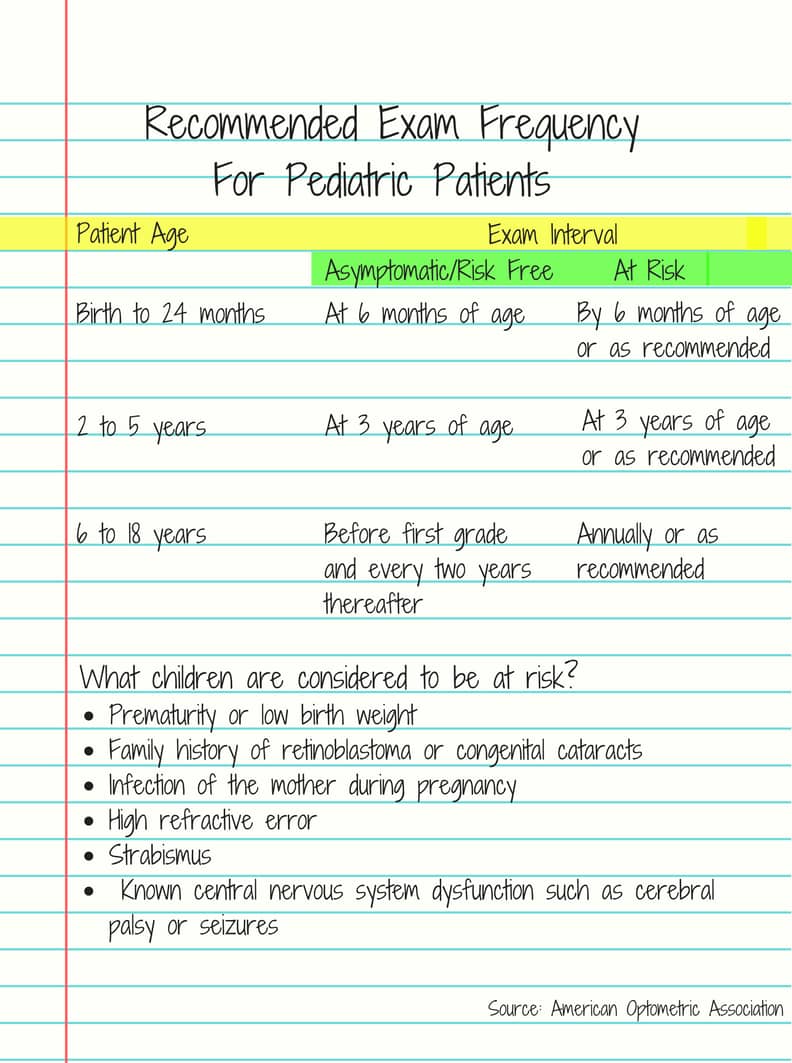Why Kids Need A Child Eye Exam Yearly

Between school, soccer and family activities it can be difficult for parents to keep everything in order. Since good vision is essential for academic progress, comprehensive eye examinations should be a priority for your child’s annual health care strategy. While screenings at the pediatrician or school nurse can detect significant visual disorders, they are not a substitute for a comprehensive eye examination.
Kids may not be aware they are experiencing abnormal vision and problems may go undiagnosed. In some cases, a vision problem could be misdiagnosed as a learning disorder.
What makes an exam with an eye doctor different than a screening?
Rather than simply reading a chart, here are some examples of the conditions that your eye doctor will be looking for during a child eye exam:
- Refractive Error: This is how the doctor measures nearsightedness, farsightedness, and astigmatism. Glasses and contact lenses are used to correct refractive error.
- Amblyopia: This happens when vision in one eye is very different from the other, either from having very different prescriptions, a turned eye, or a visual obstruction, like a congenital cataract. The brain can “turn off” the image from the blurry eye, and left untreated, amblyopia can slow the visual development which can lead to permanent vision impairment.
- Strabismus: Strabismus is when the eyes cross or one is turned. The doctor will check your child’s eye alignment to be sure they are working together since strabismus can lead to reduced depth perception and amblyopia.
- Eye Teaming/Tracking: Even with good alignment the eyes may not work well as a team. Eyestrain, headaches and difficulty with near work may result.
- Eye Diseases: Some ocular health conditions have no symptoms. Your eye doctor will examine your child’s eyes inside and out to assess their health. In most cases, early detection and treatment of eye disease can reduce the risk of permanent vision loss.
- Since eyesight develops rapidly at a young age, early detection is important. A child with an untreated eye problem may suffer from lifelong vision loss. The American Optometric Association estimates that one out of every ten children is at risk from undiagnosed eye problems.
How often should your child have an eye exam?
Read our graphic below with information from the American Optometric Association.
